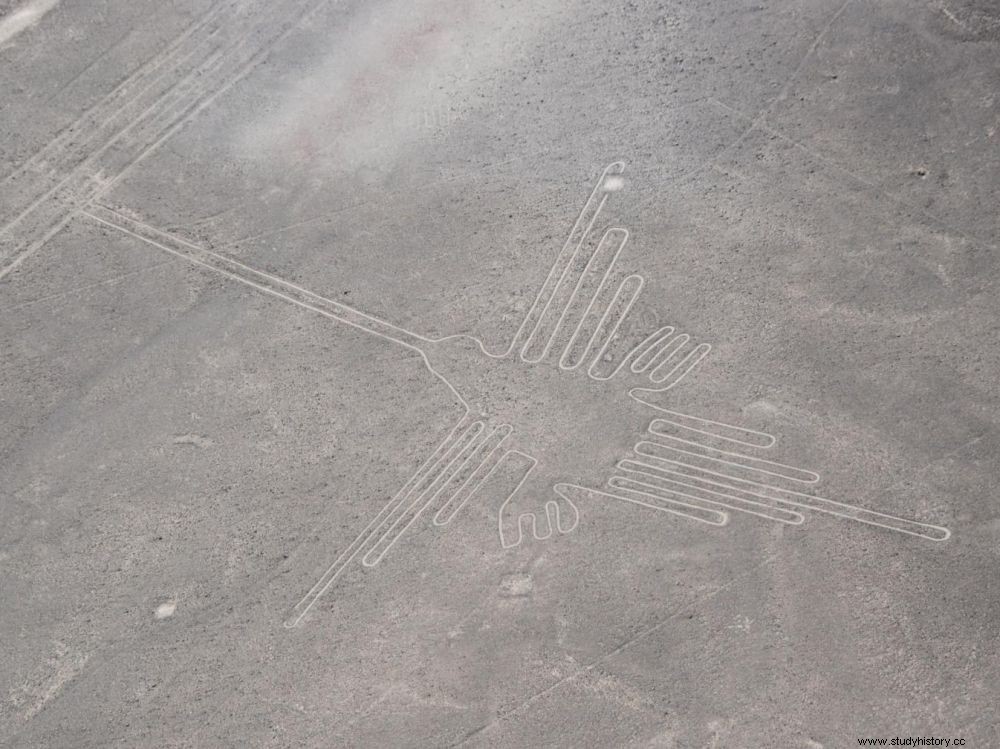Discovered in 1927 in Peru, some of these geoglyphs have recently been reanalyzed by a Japanese team, with new results.

Formerly described as a hummingbird, this fifty-meter-long geoglyph is actually a kind of sparrow.
What species are the birds depicted in the enigmatic lines of the Nasca desert in southern Peru? On an area of nearly 500 square kilometers were dug into the ground two millennia ago by a pre-Inca civilization of geometric designs and representations of plants and animals. In all 2000 drawings, some of which are gigantic, stretching over several tens of meters in length, and which also require aerial shots to be apprehended in their entirety.
Among these hundreds of drawings, only 16 represent birds. But they are the ones that have most inflamed the imaginations over the centuries, some ufologists having wanted to see in these giant figures landing strips for extraterrestrials. More serious scientists, Japanese ornithologists led by Masaki Eda (Hokkaido University Museum, Japan) sought to precisely identify these drawings in the latest publication of the Journal of Archeological Science:Reports . To do this, they released their taxonomic arsenal in order to precisely characterize some of these geoglyphs.
A more scientific identification method
Until now, these birds had been identified only from general impressions or on the basis of a few anatomical traits. The researchers went a step further and considered the size and shape of the beaks, wings, legs and necks and compared them with those of real birds living today in Peru. Result:a great shake-up in the previous identification. Thus, the fifty-meter-long hummingbird (photo), one of the most famous figures, fell from its species tree. It would rather be, according to the Japanese researchers, a simple sparrow. Other glyphs, so far unidentified, would be pelicans. Contrary sanction for drawings which had initially been taken for condors and flamingos and which, according to the data of the researchers, would not be, without the latter being able to go further and formally identify the animals represented. Finally, in another figure, the specialists think they have recognized an immature parrot embryo.
The researchers are hopeful to go further and identify all the figures still missing by comparing them with the birds appearing on the pottery unearthed in the region and dating from the same period.
